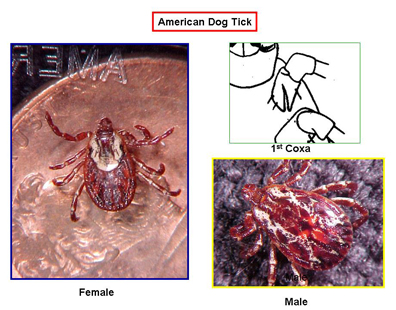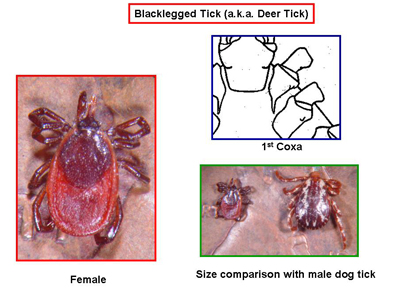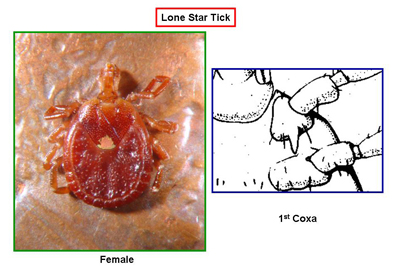Ticks, ticks and more ticks
Editor’s note: This article is from the archives of the MSU Crop Advisory Team Alerts. Check the label of any pesticide referenced to ensure your use is included.
Despite our coldish, wet spring weather, tick season appears to be moving right along. We’re getting lots of calls and specimens submitted to the lab. Most people submitting ticks are concerned that their tick might be a blacklegged tick (a.k.a. deer tick), which carries Lyme disease. Their fears are somewhat well founded because more and more blacklegged ticks are showing up in Berrien County north to Muskegon County, and other counties in the Lower Peninsula.
We have a half a dozen or so species of Ixodes ticks other than the deer tick (I. scapularis).
ticks are rather easily distinguished from other common Michigan ticks. First, Ixodes ticks do not have white markings on their backs. Our most common ticks, the American dog tick and Lone Star tick, have some kind of white marking on their backs. While Ixodes ticks are relatively easy to distinguish from other types or genera of ticks, the various species of Ixodes ticks are very difficult to distinguish from one another. One feature that can be used to indicate that a tick that you are looking at is a deer tick is the shape of the first leg segment or coxa (coxae if plural) of the first pair of legs. In deer ticks (and, unfortunately, in a few other Ixodes species) the coxae on the first pair of legs are projected into a long pointy affair. In American dog ticks, the first coxae are cleft or split in the middle.
While American dog ticks may not carry Lyme disease, they are known to transmit some other nasty diseases such as Rocky Mountain spotted fever and tularemia. Also, toxins injected with their bites cause itching, fever and in some cases tick paralysis. Be on alert for any rash, which is a primary symptom of both Rocky Mountain spotted fever and tularemia that develops after any tick bite.
Family members and pets should be inspected daily where ticks are known to be abundant. Insect repellents may help keep ticks from biting. Wrapping duct tape around pants cuffs help keep ticks from crawling up your legs. If an attached tick is found, it should be removed by placing tweezers near the head and gently pulling it off. Be careful not to squeeze the body of the tick as this can turn the tick into a hypodermic needle and inject the contents of the tick into the bite wound along with any pathogens the tick may be carrying. Keep in mind that ticks cannot feed immediately after attaching. They require several hours to imbed their mouthparts deep enough to take a bloodmeal.
Controlling ticks
Both Frontline Plus and K9 Advantix provide tick control for cats and dogs. Contact your vet for additional information.
Several products can be applied to yards to reduce the number of ticks. Fortunately, some of these products just happen to be some of the most widely available insecticides to homeowners. These include the following:
- Permethrin, which is sold under a variety of brand names. Special formulations of permethrin are available as tick repellents that can be applied to clothing to help keep ticks off.
- Carbaryl, which is primarily sold as Sevin.
- Cyfluthrin, which is sold as Tempo for commercial applicators and Bayer Advanced Garden “Power Force” Multi-Insect Killer for homeowners.
- S-fenvalerate, which is sold as Zema Lawn Spray. This product may be hard to find.
- Fluvalinate, which is sold as Mavrik Aquaflow, Yardex.
There are also natural controls that help to reduce tick populations including parasitic wasps, birds, and a variety of fungi and nematodes. Unfortunately, none of these organisms have any real success in controlling tick populations to acceptable levels. In fact, some of them are only found in areas where ticks are super abundant. Hence, biological control agents are not yet ready for widespread use in tick management programs.



 Print
Print Email
Email




